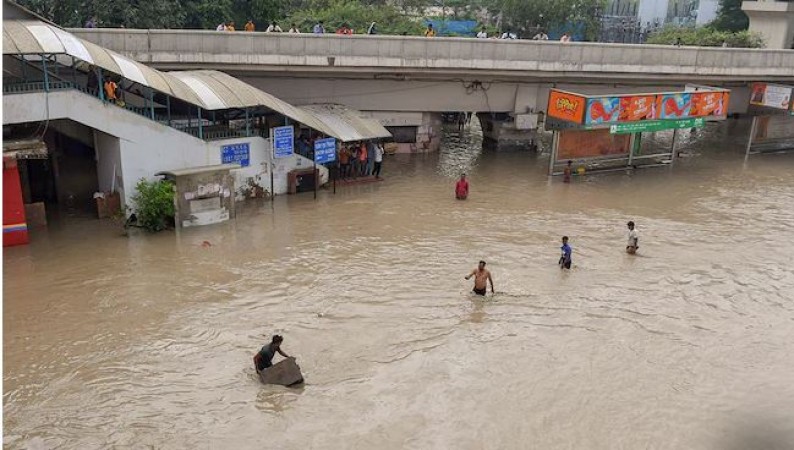
NEW DELHI: The Yamuna is presently flowing at 207.55 metres, breaking the previous record of 207.49 metres set in 1978, The Central Water Commission has said. The Old Railway Bridge's water level reached 207 metres for the first time since 2013 at 4 am, according to the Central Water Commission's (CWC) flood-monitoring portal, and it reached 207.55 metres by 1 pm. According to a department representative for irrigation and flood management, the river is likely to rise even more.
Let Us tell you that, Delhi, the capital city of India, has experienced several instances of flooding throughout its history, predominantly due to its geographical location and inadequate drainage systems. Flooding in Delhi is primarily caused by heavy monsoon rains, overflowing rivers, and inadequate infrastructure to handle excessive water flow. While it is difficult to provide an exhaustive list of all flood occurrences, I will highlight some significant instances of flooding in Delhi over the years.
1908: Delhi witnessed a severe flood in 1908 when the Yamuna River overflowed due to heavy rainfall. The flood caused extensive damage to infrastructure and affected several areas of the city.
1947: Following the partition of India and Pakistan, Delhi experienced massive population influx, which strained its resources and infrastructure. In 1947, heavy monsoon rains led to significant flooding in the city, exacerbating the already challenging conditions faced by the refugees.
1955: Another severe flood struck Delhi in 1955, caused by incessant rainfall. The Yamuna River breached its banks, leading to widespread devastation and loss of lives. The flood highlighted the need for improved drainage systems and flood management strategies in the city.
1978: The year 1978 witnessed a devastating flood in Delhi, with the Yamuna River reaching alarming levels. The flood affected numerous residential areas, displacing thousands of people and causing substantial damage to property and infrastructure.
1995: In July 1995, Delhi experienced one of its most catastrophic floods. Continuous heavy rains led to the Yamuna River overflowing, resulting in widespread destruction. Many low-lying areas of the city were submerged, and the flood caused extensive damage to homes, roads, and public utilities.
2008: Delhi faced significant flooding once again in 2008 when the Yamuna River crossed the danger mark due to heavy rains. Several residential colonies along the riverbanks were severely affected, causing immense distress to the residents and highlighting the need for improved flood control measures.
2010: Heavy monsoon rains in September 2010 caused flash floods in several parts of Delhi. Many areas experienced waterlogging, disrupting normal life and causing traffic congestion. The flood highlighted the urgent need for better stormwater management systems.
2013: In June 2013, Delhi witnessed another devastating flood due to heavy rainfall. The overflowing Yamuna River led to the submergence of numerous low-lying areas, causing significant damage to property and infrastructure. The flood also resulted in the evacuation of residents from affected regions.
2018: In August 2018, Delhi faced severe flooding following incessant rains. Many parts of the city, including major roads and residential areas, were waterlogged, causing massive traffic jams and inconvenience to the residents. The flood underscored the pressing need for improved drainage systems and urban planning.
These are just a few instances of major floods in Delhi over the years. The frequency and severity of flooding in the city highlight the need for comprehensive flood management strategies, including improved drainage systems, urban planning, and early warning systems. The government and concerned authorities have been working towards addressing these issues and implementing measures to mitigate flood risks in the future. However, the challenge remains significant, considering Delhi's vulnerability to flooding due to its geographical location and monsoon rainfall patterns.
Ex-Chief Secretary BR Sharma appointed J-K's State Election Commissioner
The International Space Station: A Marvel of Speed and Exploration
India's Wholesale Prices Plunge for Third Consecutive Month